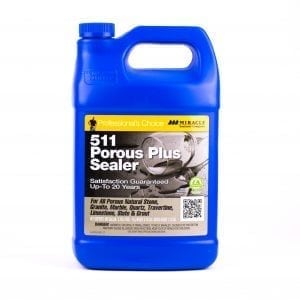A History of Moroccan Tile and its Enduring Design Appeal
The Old-World charm of Morocco tile and Mediterranean tile remains timeless. While other design trends come and go, artisans continue to handcraft these stunning encaustic cement tiles just as their predecessors did back in 711 A.D., one tile at a time.
There’s something special about the enduring art form of Zellige tile in a fast-paced, technology-driven world. The passion and care that today’s craftspeople put into the process pays homage to the rich history and cultural significance that embodies the Moroccan tile that we know and love today.
As we delve deeper into its origin, it’s easy to see why Morocco and the Mediterranean continue to inspire the tile world.
Mediterranean Origin
Zellige tile’s origin dates to around 711 A.D. Muslim inhabitants of North Africa and the Mediterranean created Zellige as handmade Moorish art with non-refined clay from Morocco’s Fez region. Thanks to the abundance of this unique clay, Fez remains the global center for Zellige tile.
Due to the intricacies and complexities of the designs, artisans crafted early European Zellige tiles for wealthy aristocrats and royals. Mosques and other structures throughout Morocco and parts of Spain featured bold tile patterns.
Mathematical Precision Combines with Artistic Expression
The word “zellij” comes from the root Arabic word زَلَجَ, meaning “to slide,” according to Muslim lifestyle brand lasouk. This refers to the smooth, glazed tile surface.
First, artisans hand cut, fire, and glaze each zellij tile. Next, they set them in a plaster base to form an endless number of geometric patterns, including squares, diamonds, polygons, stars, and crosses. Then, they fit the tiles together in a mathematical arrangement to form a very precise mosaic.
View this post on Instagram
Because Islam prohibits portraying living things, artists created geometric patterns for artistic expression and to add color and significance to the mesmerizing mosaics. Early Moroccan tiles (circa 10th century) were plain shades of white and brown.
During the Nasrid Dynasty and Marinid Dynasty in the 14th century, more vibrant colors of green, blue, and yellow joined the Zellige tile palette. Red Moroccan tile arrived in the 17th century.
Carrying on Tradition
Making Moroccan tiles is an enduring art form. Many artisans learn the craft from family members at a very early age, so these skills, expertise, and art transcend multiple generations. Many tilemakers feel a distinct sense of pride in carrying on an ancient tradition.
Modern Moroccan Tile Applications
Moroccan tiles adorned ceilings, floors, columns, courtyards, pools, and fountains in buildings, mosques, universities, and other public places throughout Morocco for centuries. Many of the splendid ancient architectural structures still exist.
The 20th-century Hassan II Mosque in Casablanca, Morocco, features a breathtaking display of Zellige tile inside and outside the building. The iconic site was completed in 1993 and is the largest functioning mosque in Africa.
Today, Moroccan tile is a popular design element in many homes and buildings across the U.S. and worldwide. Homeowners and interior designers use Zellige tile in kitchen and bathroom backsplash, shower walls, decorative niches, fireplace surrounds, and so much more.
Zellige tile’s enduring popularity is arguably due to the ongoing passion the artisans pour into making such gorgeous, unique finished products. Because they are handmade, no two Zellige tiles are exactly alike. The slight color and size variations and other imperfections give the tiles a rustic, distinct appearance.
Plus, Moroccan tiles make such a striking visual and textural design statement in many different applications and settings.
View this post on Instagram
We love this video from @elfennmarrakech of the glimmering green Zellige-lined pool at the luxurious El Fenn Hotel Marrakech.
View this post on Instagram
And we’re gushing over the unique, Old-World charm of our Sea and Forest Green 4″x4″ Zellige as a checkerboard pattern backsplash.
View this post on Instagram
We must confess that we couldn’t resist bringing a little bit of Marrakech to Texas when we expanded our showroom. We decked out the archway with our Unglazed Natural 2″x6″ Chiseled Zellige and checkered Emerald Green and Snow 4″x4″ Zellige.
Bring the Mediterranean Home with Zellige Tile
Our customers love the wide array of Zellige tiles that we carry.
You don’t have to travel across continents to enjoy a timeless Mediterranean tile aesthetic. And thankfully, the rustic charm of Moroccan tile is a design trend that’s likely here to stay. Contact us to help you bring the Mediterranean home with our handcrafted, popular Zellige tile picks.


